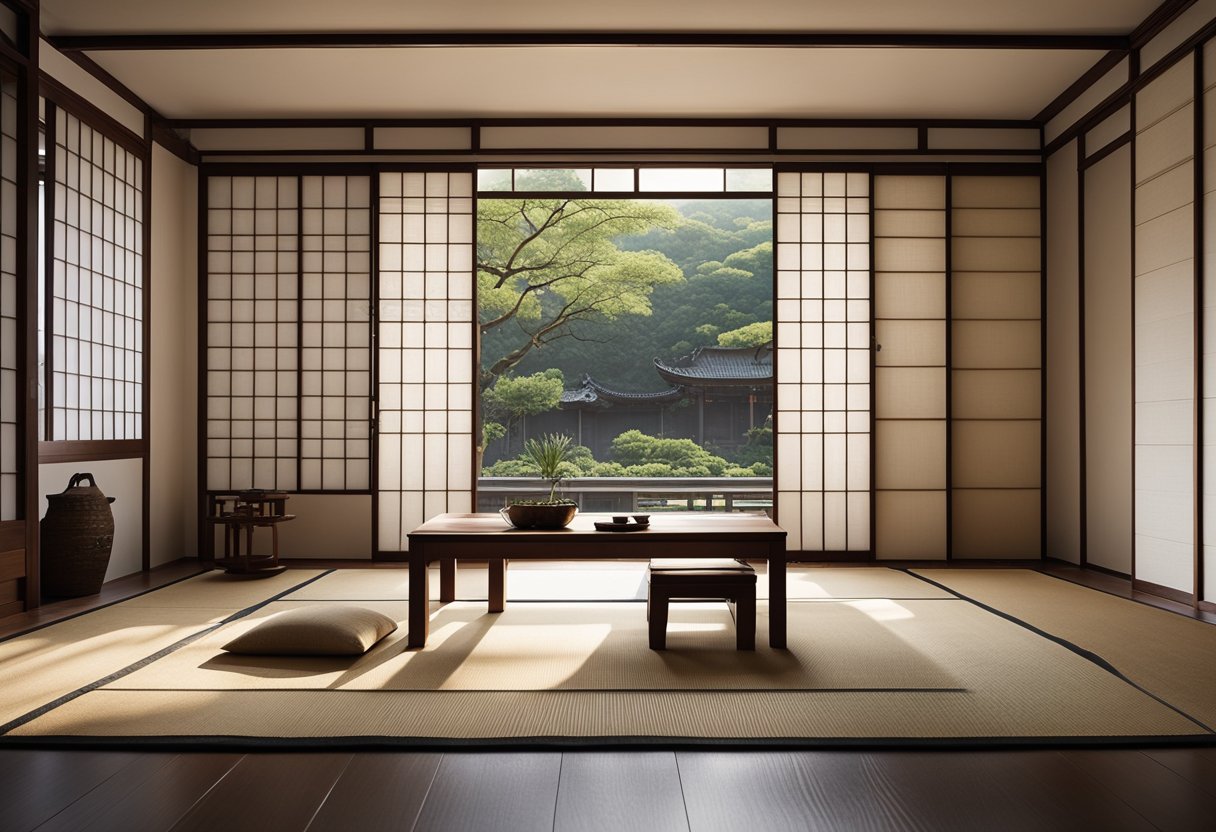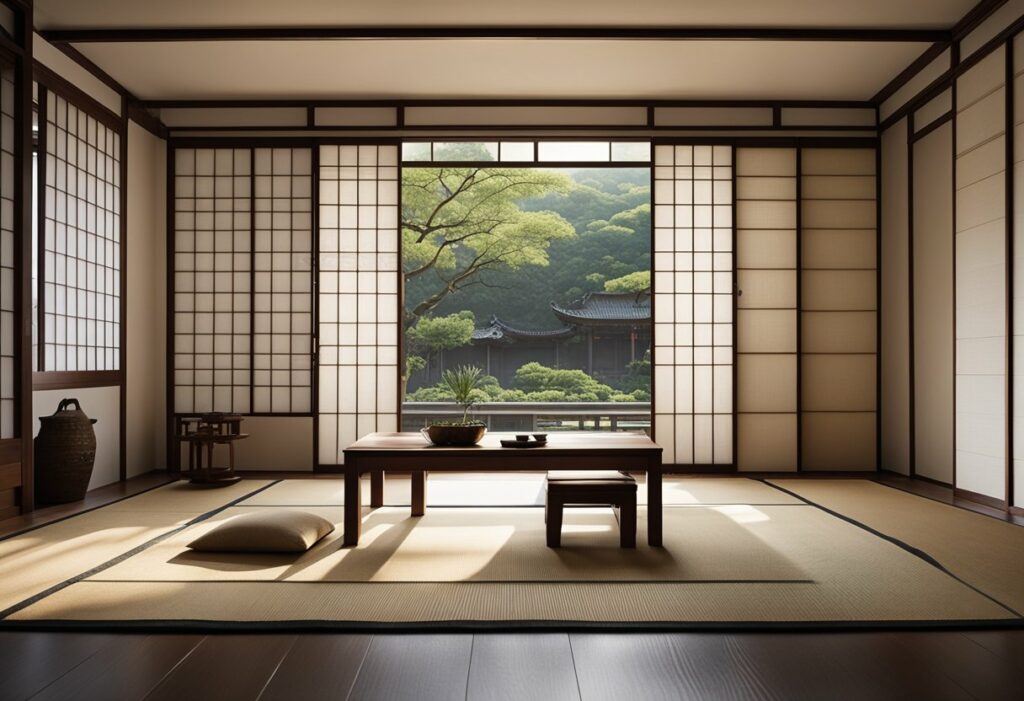Asian Interior Design: Discover the Beauty of Eastern Aesthetics in Your Home
Asian interior design is a popular design style that has been around for centuries. It is characterised by clean lines, simple yet elegant furniture, and a focus on natural elements. It is a style that is both practical and aesthetically pleasing, making it a popular choice for those who want to create a peaceful and harmonious living space.

The fundamental elements of Asian interior design include the use of natural materials such as wood, bamboo, and stone. These materials are often left in their natural state and used to create a sense of balance and harmony in the space. Another key element is the use of light and space. Asian interior design often incorporates large windows and open spaces to create a sense of flow and movement.
Key features of Asian interior design include the use of bold colours and patterns, as well as the use of traditional Asian furniture such as low tables and floor cushions. It is also common to see Asian-inspired artwork and accessories such as Japanese screens and Chinese vases. By incorporating these key features and furniture into your home, you can create a space that is both functional and visually appealing.
Key Takeaways
- Asian interior design is characterised by clean lines, natural materials, and a focus on light and space.
- Key features of Asian interior design include the use of bold colours and patterns, traditional Asian furniture, and Asian-inspired artwork and accessories.
- By incorporating these elements into your home, you can create a peaceful and harmonious living space that is both practical and aesthetically pleasing.
Fundamental Elements of Asian Interior Design

Asian interior design is a unique and exciting style that has been influenced by various cultures across the continent. This style is characterised by its focus on natural elements, balance, and harmony. In this section, we will explore the fundamental elements of Asian interior design, including the influence of nature and balance, the role of colour and light, and material choices in Asian decor.
Influence of Nature and Balance
Nature plays a significant role in Asian interior design, with designers often incorporating natural elements into their work. In Japan, for example, the concept of “wabi-sabi” is central to interior design. This concept emphasises the beauty of imperfection, with designers using natural materials such as wood, stone, and bamboo to create a sense of harmony and tranquillity.
Similarly, in China, the principles of feng shui are often used to create a harmonious and positive energy flow in a space. This involves incorporating natural elements such as plants and water features into the design, as well as ensuring that furniture is arranged in a way that promotes balance and serenity.
The Role of Colour and Light
Colour and light are also essential elements of Asian interior design, with designers often using a muted colour palette to create a sense of calm and tranquillity. In Thailand, for example, the use of gold and red is common, as these colours are believed to bring good luck and prosperity.
Lighting is also crucial in Asian interior design, with designers often using soft, diffused lighting to create a warm and welcoming atmosphere. In Japan, for example, paper lanterns are a common feature of interior design, as they create a soft, warm glow that is perfect for creating a relaxing and peaceful environment.
Material Choices in Asian Decor
The choice of materials is also an essential element of Asian interior design, with designers often using natural materials such as wood, bamboo, and stone. These materials are valued for their simplicity and harmonious qualities, and are often used to create a minimalist and uncluttered aesthetic.
In Malaysia, for example, traditional homes are often made from wood and feature intricate carvings and details. This attention to detail is also seen in Japanese interior design, where designers often use natural materials such as bamboo to create a sense of simplicity and elegance.
In conclusion, Asian interior design is a unique and exciting style that is characterised by its focus on natural elements, balance, and harmony. By incorporating these fundamental elements into your own interior design, you can create a space that is both beautiful and serene.
Key Features and Furniture

Asian interior design is all about creating a serene and harmonious space that balances the mind, body, and nature. To achieve this, Asian interior design features unique furniture pieces, functional spaces, and storage solutions. Here are some key features and furniture pieces that can help you achieve a beautiful Asian-inspired interior design:
Functional Spaces and Storage Solutions
Incorporating functional spaces and storage solutions is a fundamental part of Asian interior design. You can achieve this by including furniture pieces such as cabinets, shelves, and drawers. These pieces of furniture are not only functional but also serve as decorative elements in your home. For instance, you can use a cabinet to store your books, dishes, or other household items. Shelves can also be used to display your art pieces or books.
Statement Pieces and Artwork
Incorporating statement pieces and artwork is another key feature of Asian interior design. You can use artwork to add colour, texture, and depth to your space. Asian-inspired artwork often features natural landscapes, animals, and calligraphy. You can also use accent furniture such as a coffee table or rug to add visual interest to your space.
Incorporating Traditional and Modern Elements
Asian interior design is all about balancing traditional and modern elements. You can achieve this by incorporating natural materials such as wood, bamboo, and stone. These materials create a warm and inviting atmosphere that is perfect for relaxing. You can also use modern furniture pieces such as sectional or platform beds to add a contemporary touch to your space.
Incorporating sustainable and natural materials is also a key feature of Asian interior design. You can achieve this by using furniture pieces made from natural wood or rattan. These materials are not only sustainable but also add a touch of wabi-sabi, a Japanese design concept that celebrates imperfections and simplicity.
In summary, Asian interior design is all about creating a harmonious space that balances the mind, body, and nature. To achieve this, you can incorporate functional spaces and storage solutions, statement pieces and artwork, and traditional and modern elements. By using natural materials such as wood, bamboo, and stone, you can create a warm and inviting atmosphere that is perfect for relaxing.
Frequently Asked Questions

How can I infuse my home with modern Asian-inspired aesthetics?
To infuse your home with modern Asian-inspired aesthetics, you can start by incorporating clean lines, natural materials, and a neutral colour palette. You can also add some statement pieces, such as a Japanese shoji screen or Chinese porcelain vase, to add a touch of authenticity. Consider using some contemporary Asian-inspired furniture, which combines traditional design with modern elements. Finally, adding some greenery, such as a bonsai tree or bamboo plant, can help bring a sense of tranquillity and balance to your space.
What are the defining characteristics of traditional Asian-style interiors?
Traditional Asian-style interiors are characterised by a minimalist approach, natural materials, and a harmonious colour palette. They often incorporate elements such as tatami mats, shoji screens, and sliding doors. The use of natural materials such as bamboo, wood, and stone is also a defining feature. Traditional Asian-style interiors often have a strong connection to nature, with the use of indoor gardens and water features.
Could you suggest some vibrant Southeast Asian design elements for my living space?
Some vibrant Southeast Asian design elements that you can incorporate into your living space include bold colours, intricate patterns, and natural materials. Consider using some colourful batik fabrics, intricately carved wooden furniture, or woven rattan pieces. You can also add some traditional Southeast Asian art, such as Balinese masks or Thai silk paintings, to add a touch of authenticity.
What are the principles behind Zen interior design, and how can I implement them?
Zen interior design is based on the principles of simplicity, harmony, and balance. It emphasises the use of natural materials, such as wood and stone, and a neutral colour palette. To implement Zen interior design in your home, you can start by decluttering and simplifying your space. You can also add some natural elements, such as a rock garden or indoor water feature, to create a sense of calm and tranquillity.
In what ways can Wabi Sabi philosophy transform my home’s interior design?
Wabi Sabi philosophy is based on the principles of imperfection, impermanence, and simplicity. It emphasises the beauty of natural materials and the passage of time. To incorporate Wabi Sabi philosophy into your home’s interior design, you can use natural materials such as wood and stone, and embrace imperfections such as cracks and knots. You can also add some handmade ceramics or pottery to add a touch of authenticity.
What unique decor pieces are essential for capturing an authentic Asian ambiance?
Some unique decor pieces that are essential for capturing an authentic Asian ambiance include a Japanese shoji screen, Chinese porcelain vase, and a Korean celadon bowl. You can also add some traditional Asian art, such as a Chinese calligraphy scroll or Japanese woodblock print, to add a touch of authenticity. Finally, adding some greenery, such as a bonsai tree or bamboo plant, can help bring a sense of tranquillity and balance to your space.



